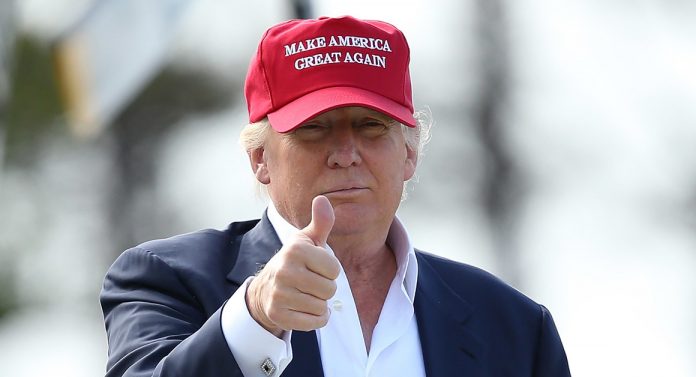
President Donald Trump announced he is moving forward with a renegotiation of the North American Free Trade Agreement after all, following a dramatic show of brinkmanship. But NAFTA’s not in the clear yet.
Washington, Mexico City, and Ottawa were abuzz with speculation Wednesday that Trump would start the process for pulling out of the 23-year old trade pact, after Politico reported the White House was considering an imminent withdrawal.
In phone calls late Wednesday, Trump reassured Canadian Prime Minister Justin Trudeau and Mexican President Pena Nieto he wouldn’t pull out of the pact. But not before the reports of a possible withdrawal stirred anxiety in Ottawa and Mexico City, causing the peso to plunge. The White House notably didn’t swat down Wednesday’s reports, and merely said it wouldn’t comment on rumors.
Trump cleared up the matter during remarks from the Oval Office with Argentinian President Mauricio Macri Thursday. “I was going to terminate NAFTA two or three days from now,” but Mexico asked him to renegotiate instead, he said. “I decided rather than terminating NAFTA, which would be a pretty big, you know, shock to the system, we will renegotiate,” he added.
However, he didn’t rule out scrapping NAFTA in the future. “Now, if I’m unable to make a fair deal, if I’m unable to make a fair deal for the United States, meaning a fair deal for our workers and our companies, I will terminate NAFTA. But we’re going to give renegotiation a good, strong shot,” he said.
Trade experts say repealing NAFTA, which links the U.S., Canadian, and Mexican economies, would disrupt all three economies. Thirty-eight U.S. states rely on Canada and Mexico as their largest foreign markets. U.S. trade with Canada and Mexico totals nearly $1.2 trillion per year, almost double that of U.S. trade with China.
Wednesday’s drama may have been a negotiating stunt. But some observers suggested the move was aimed not only at a foreign audience – Ottowa and Mexico City – but a domestic one: Congress. Canada and Mexico have been ready for weeks to begin negotiations on updating NAFTA. It’s the United States that hasn’t been able to start the talks because it doesn’t have its trade representative in place.
Under U.S. law, the U.S. trade representative must formally notify Congress that the administration will begin renegotiations, starting the clock on a 90-day period before the talks can begin. But the confirmation of Trump’s nominee, Robert Lighthizer, has been held up for months amid disagreement over a waiver Senate Democrats say he needs due to his past work for foreign governments. The Senate Finance Committee confirmed Lighthizer Tuesday, along with the waiver. Now he awaits confirmation by the full Senate. Trump’s gambit might have been a way of pressuring the Senate to move quickly and confirm him.
During his presidential campaign, Trump turned NAFTA into a political punching bag, calling it at times the “worst trade deal in the history of the world,” a “total disaster,” and “catastrophic.” He softened his stance after stepping into the Oval Office, though his bombastic rhetoric and repeated policy U-turns on NAFTA may be fraying Washington’s relations with Ottawa and Mexico City.
If the United States wanted to withdraw from NAFTA, it would have to formally notify its neighbors six months in advance. After its repeal, Canada and Mexico could impose higher tariffs on U.S. imports, which could put the United States at a disadvantage given trade rules under the World Trade Organization.
Each country negotiates their own tariff ceiling with the World Trade Organization. The United States’ ceiling is much lower than Mexico’s, meaning if Trump nuked NAFTA, Mexico could slap much higher tariffs on the United States than the United States could on Mexico.
(c) 2017, Foreign Policy · Robbie Gramer
{Matzav}











